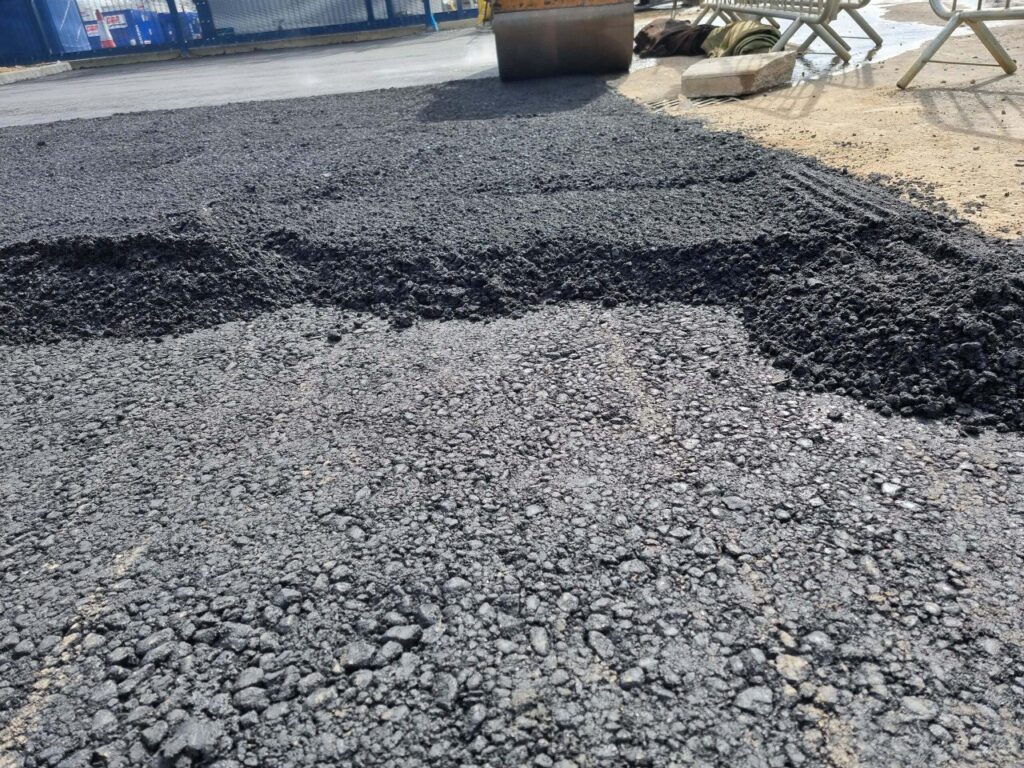Tarmac Resurfacing: Breathing New Life into Aging Roads
Introduction: Asphalt, commonly known as tarmac, is a resilient and long-lasting material often used in road construction. However, over time, even the most well-constructed tarmac roadways can begin to show signs of wear and ageing. Cracks, potholes, and surface deterioration are common issues that can compromise road safety and performance. Tarmac resurfacing offers a cost-effective and sustainable solution to revitalise ageing roads. In this blog post, we’ll explore the benefits and process of tarmac resurfacing.
The Benefits of Tarmac Resurfacing
Cost-Effective: Tarmac resurfacing is often more cost-effective than completely reconstructing a road. It allows you to extend the lifespan of the existing road infrastructure while saving on material and labour costs.
Reduced Environmental Impact: Resurfacing minimises waste and reduces the need for new materials, making it an environmentally friendly option. Recycling of old tarmac materials can further reduce the project’s carbon footprint.
Improved Safety: Cracks, potholes, and surface irregularities can pose safety hazards to drivers and pedestrians. Resurfacing creates a smooth, safe driving surface, reducing the risk of accidents and vehicle damage.
Enhanced Aesthetics: A newly resurfaced road looks cleaner and more appealing, improving the area’s overall appearance.
Longevity: Tarmac resurfacing extends the life of the road, providing several more years of reliable service. Properly maintained resurfaced roads can last for decades.
The Tarmac Resurfacing Process
Tarmac resurfacing involves several key steps:
Surface Preparation: The existing road surface is thoroughly cleaned, removing debris and loose material. Any large potholes or damaged areas are repaired.
Application of Tack Coat: A tack coat, a thin layer of asphalt emulsion, is applied to the existing surface. This helps the new tarmac adhere to the old surface.
Laying the New Tarmac: Fresh tarmac mix is applied and spread evenly over the existing road surface using specialised equipment. The thickness of the new layer depends on the project’s requirements.
Compaction: Compactors compress and smooth the tarmac surface, ensuring proper compaction and a uniform finish.
Edge Milling: Edge milling creates a smooth transition between the resurfaced road and adjacent surfaces, such as curbs and driveways.
Line Striping and Markings: Road markings, lane lines, and other necessary signage are applied to the newly resurfaced road.
Curing: The tarmac surface can cure and harden before it’s opened to traffic.
Conclusion: Tarmac resurfacing is a cost-effective and sustainable solution for rejuvenating ageing roads, extending their lifespan, and enhancing safety. It’s an environmentally responsible choice that reduces waste and minimises the environmental impact of road maintenance. At Rochester Driveways & Surfacing, we specialise in tarmac resurfacing projects, ensuring communities enjoy safe, durable, and visually appealing roadways for years. If your road infrastructure is showing signs of ageing, consider tarmac resurfacing as a smart investment in the future.
Call us on: 01634 564 093
Click here to find out more about Rochester Driveways & Surfacing
Click here to complete our contact form and see how we can help with your driveway needs.

